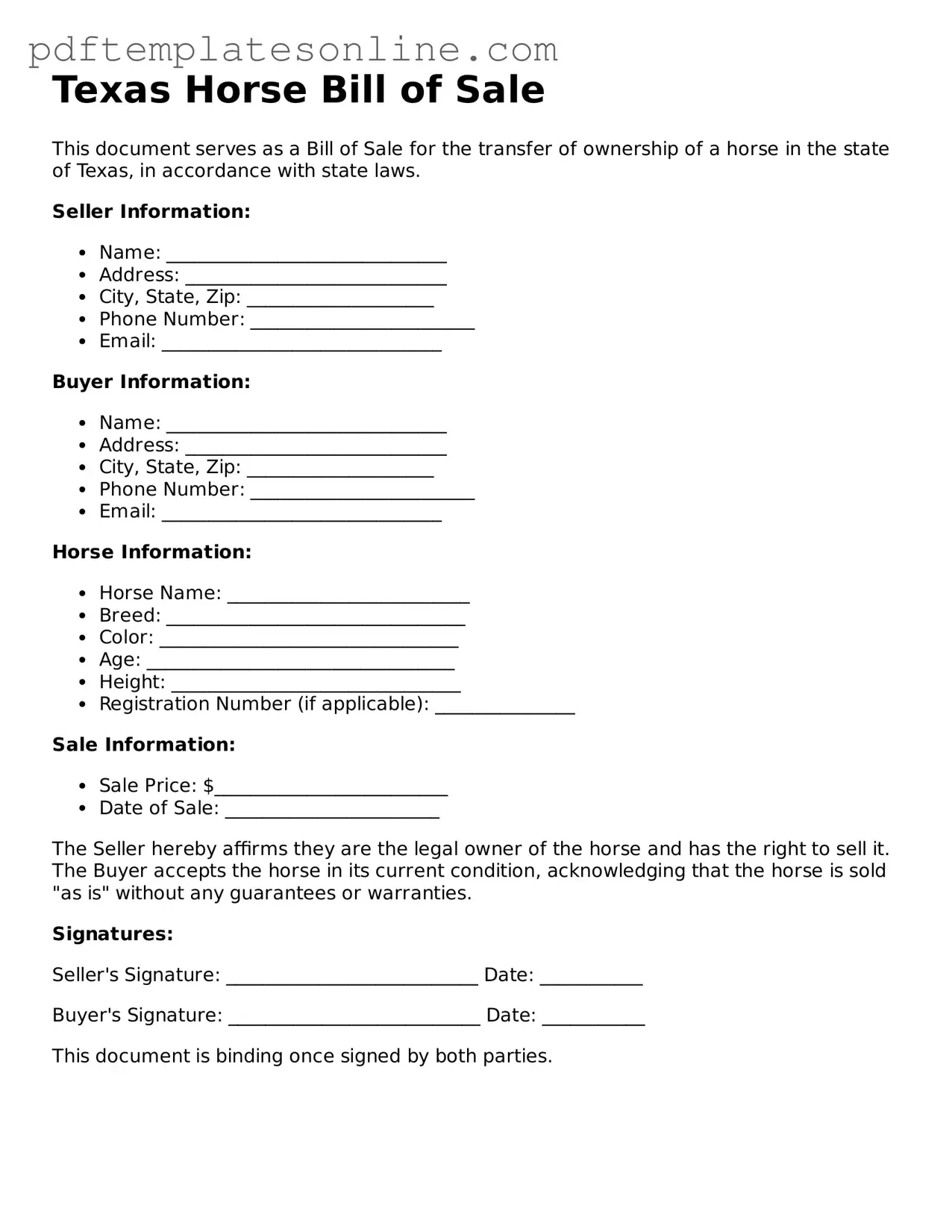When completing the Texas Horse Bill of Sale form, individuals often overlook critical details that can lead to complications. One common mistake is failing to include accurate identification information for both the buyer and the seller. This includes full names, addresses, and contact information. Inaccurate or incomplete information can create issues later, especially if disputes arise.
Another frequent error is neglecting to provide a clear description of the horse being sold. This should encompass not only the horse's name but also its breed, age, color, and any identifying marks. A vague description may lead to misunderstandings about the horse's identity, which could complicate ownership verification.
People also sometimes forget to specify the terms of the sale. This includes the purchase price and any payment arrangements. Without these details, the agreement lacks clarity, which can result in disputes over what was agreed upon. It’s essential to document all financial terms clearly to avoid future disagreements.
Additionally, some individuals fail to include the date of the sale. This date is crucial for establishing the timeline of ownership transfer. Without it, the record may not hold up in legal situations, particularly if questions about ownership arise later.
Another mistake is not having the document signed by both parties. A bill of sale is only valid when it is signed, so both the buyer and seller must provide their signatures. Without this step, the transaction may not be legally enforceable, leading to potential issues down the line.
Finally, individuals often neglect to keep a copy of the completed form. Retaining a copy ensures that both parties have a record of the transaction. This can be vital for future reference, especially if any disputes or questions about the sale come up later.
